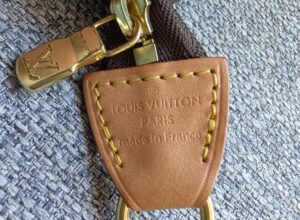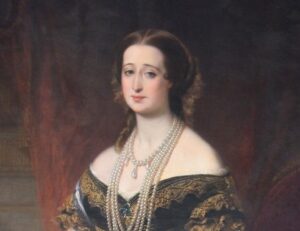The famous trunk, the monogram, and Damier Ebene prints — Louis Vuitton is full of iconic symbols renowned for decades. But do you know about the founder, Louis Vuitton, and how he laid the foundation of the world’s leading luxury goods group? Let’s delve into its history and uncover it today.
Louis Vuitton was born in the small French town of Anchay in the Jura region of France on the 4th August 1821, near to the Swiss border. Louis Vuitton had a difficult childhood, with his father and mother both passing away before his teenage years. In 1835, at just 13 years old, Louis Vuitton left his home in rural France to seek his fortune in Paris, the French capital. Paris was almost 300 miles from Anchay, and Louis took various jobs whilst travelling to Paris in order to fund his journey.
Louis Vuitton arrived in Paris in 1837, and served as an apprentice under Monsieur Marichal, an expert luggage maker. Louis Vuitton had evident talent and passion for his craft, and rose quickly up the ranks within Monsieur Marichal’s company and built a reputation as one of the most skilled luggage makers in France.
In 1852, Napoleon III declared himself as Emperor of France, and Louis Vuitton was appointed as the personal luggage maker for Empress Eugenie, the wife of the Emperor. Louis Vuitton now had access to a wealthy customer base through his work with the royal family. In 1854, Louis Vuitton opened his first shop in Paris, located at 4 Rue Neuve de Capucines, Paris. In 1858, Louis Vuitton developed his first iconic rectangular trunk, which was ideal for transporting delicate and fragile items on railroads, steam ships and other popular forms of transportation at the time.

Over the next few years, Louis Vuitton saw a huge increase in demand for his luggage, and opened a new workshop in the Asnières suburb of Paris. In 1866, he would invent the tumbler lock, which was much more secure and would prove much more resistant to lock picking than the other locks of the time. In 1872, he would introduce his iconic striped Rayée canvas. In 1885, Louis’s son Georges would open Louis Vuitton’s first shop in London, located on Oxford Street. Four years later, the London shop would be relocated to The Strand.
View this post on Instagram

At the time of his death in 1892, Louis Vuitton left control of the business to his son Georges. Georges was the only child of Louis Vuitton and his wife Josephine, and would play a key role in building the Louis Vuitton brand and business around the world. Louis Vuitton had developed a reputation for making luggage of the highest quality, and this had inspired many counterfeiters to create poor-quality copies of Louis Vuitton products. In 1896, Georges Vuitton created the legendary Louis Vuitton Monogram Canvas, which featured flowers, the Louis Vuitton logo, diamonds and the quatrefoil – literally “four leaves” – a symbol of heraldry and luxury. This design would prove much harder to counterfeit and became a key part of the Louis Vuitton brand.
Georges Vuitton had a passion for automobiles, which were a new form of transportation at the time. Due to the more limited space available in cars compared to ships and trains, he designed smaller, more portable luggage that would fit more easily in the cars of the day. Georges did not believe in offering discounts on his products but did reward loyal customers by giving them free gifts which were often smaller pieces of luggage. Georges would also create the first Louis Vuitton travel book – Le Voyage – which provided a wealth of useful information to travellers.
By the time of Georges Vuitton’s death in 1936, Louis Vuitton was regarded as perhaps the finest maker of luggage in the world.
See also:
The Ultimate Guide to Buying Second-Hand or Vintage Louis Vuitton Bags
LV Bag – History, Price, Material and All!
Louis Vuitton History – from a Trunk Maker to Fashion House
Louis Vuitton’s Influence Among 19th-Century Elite in Europe





















